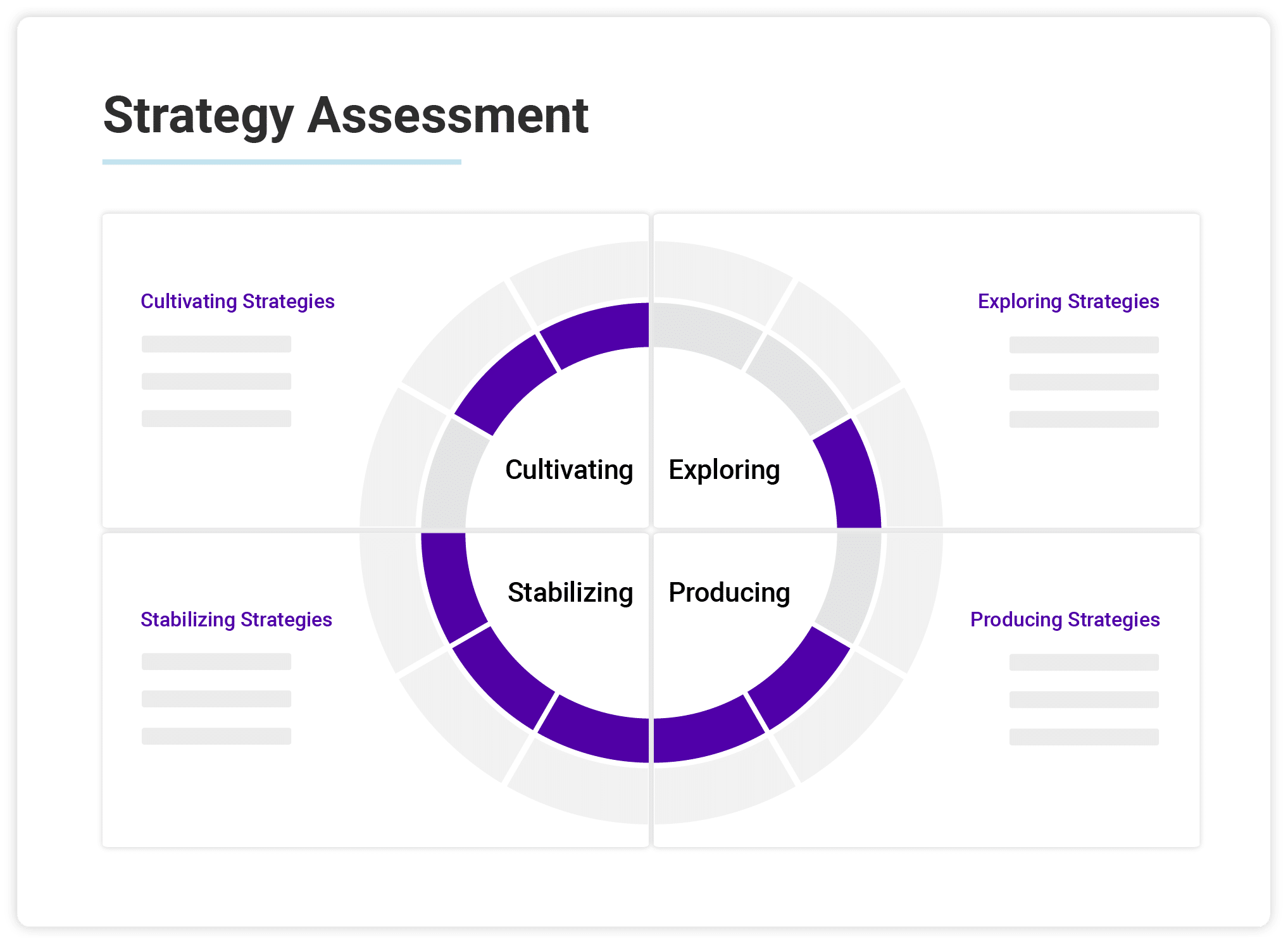Great managers are constantly performing a high-wire act. They balance their people’s needs with a wide range of critical duties, often playing psychologist, strategist, and quality control specialist all at once.
These managers are always striving for team cohesion. They’re also focusing on broader company goals and adhering to the stated mission—all of which becomes more complicated during times of uncertainty (like indefinite remote work).
Sound like your weekly juggling act?
You’re not alone. Even the best managers fail to thread this needle occasionally. But by focusing on the right priorities, you can become a better, more efficient boss, rather than constantly playing managerial whack-a-mole.
That means:
- Taking a team-first approach
- Helping direct reports prioritize the work to be done
- Limiting reliance on overused strengths
- Developing other great leaders
Make a point of whacking these four moles every week, and the rest will fall into place.
1. Taking a team-first approach
You might be asking, “Yeah, but what does that actually mean?”
And that’s fair. Taking a team-first approach does not mean doing everything for them. Rather, it means helping your team understand:
- What type of team they are
- Where their strengths and shortcomings lie
- The communication preferences of individual team members
That understanding starts at the top. As manager, whether you have three direct reports or 30, you achieve cohesion through a careful combination of collaboration and autonomy. A team that’s full of collaborators might brainstorm well, but not get work done on time. Meanwhile a team that’s too autonomous could end up working in silos—or totally different directions.
Start with team type. This refers to the general behavioral makeup of your team. To gain a better understanding, ask questions like: How many high-dominance drives are on our team? Who’s best suited to keep us on track and abiding by the rules? How risk-averse is this group?
As you ask these questions, see how they map back to team members’ strongest behavioral drives. This will help you decide where and when to collaborate versus delegate. And in doing so, you’ll guide your team toward its peak efficiency.
Every type of team has strengths—even those that seem less balanced on paper. Your job as the manager is to understand how to best utilize the people on hand so they balance one another, without losing sight of macro-level goals.
2. Helping direct reports prioritize the work to be done
About those macro-level goals: You might have noticed that, especially during times of change, they tend to evolve. That presents another test of your management skills.
In assessing your evolving strategy, you need to regularly think about the work to be done, and who’s doing that work.

That means you’re always making sure your team members are focused on tasks that tie to strategic priorities, especially as these goals shift. It might also mean re-evaluating whether those are the right people for those tasks. If they’re not, it isn’t an indictment of their abilities, but a matter of operational efficiency.
Of course, your communication skills as a manager are tested whenever you determine changes are necessary. It’s never easy to tell a person their role needs to change, particularly if the person had no control over the outside factors dictating the change.
But good managers have a way of tying these conversations to other career-path and development opportunities.
Figure out how you can still leverage these employees’ strengths effectively. Emphasize that their value hasn’t diminished, but that in order to maximize their potential (and their impact on the company), you need them to pivot. Outline specifically how their new role maps to the organization’s revised goals.
And after you have that initial conversation, stay connected. Revisit the work to be done through regular check-ins, or other mediums, based on that person’s preferred communication style. Reiterate their value and your feelings of appreciation. In doing so, you guard against a dip in morale and deeper feelings of employee disengagement.
3. Limiting reliance on overused strengths
Particularly during times of stress and change, you and your team members are going to lean heavily on your strongest behavioral drives. It’s a natural inclination that’s totally understandable, yet potentially detrimental to team cohesion.
That’s not to say leaning on your strengths doesn’t have its time and place.
But in times of anxiety, if missing team goals turns your assertiveness to pushiness, that’s a different story. Because you’re suddenly concerned about the company’s viability—and your own job security—your high dominance may manifest as:
- Pushing your ideas onto others
- Relying more heavily on intensity and adrenaline
- Micromanaging the team
In a worst-case scenario, your team members will disengage. The good news is that if your management style hinges on self-awareness, you’ll be keen to your strongest behavioral drives, and therefore keep them in check before you overuse them.
Your leadership skills can be accentuated through your strongest drives. But to be a better manager, it’s important to recognize when your stress is heightened, and take a step back. Simply saying out loud to your team, “I’m over-relying on my high dominance right now,” will display a self-awareness that your team will appreciate. And it will help both you and the group reset toward a productive, cohesive discussion.

4. Developing other great leaders
The best managers excel at doing something that’s really difficult to teach: They groom other leaders through their actions.
Take the above situation, for example. When you recognize your own reliance on an overused strength and call attention to it, you’re leading in a manner that promotes followership. You’re encouraging other team members to be cognizant of the behavioral drives that might swell when they’re stressed.
Self-awareness is a skill you can promote in others to help them become better leaders. And, as you remind them to familiarize themselves with their behavioral profiles, you can encourage them to consider stretching beyond their comfort levels from time to time.
Remote work affords baby-step opportunities for this sort of personal growth. If you have team members with higher levels of formality but lower levels of extraversion, you can leverage their detail-oriented nature by asking them to draw up guidelines for remote team communication. Then, with ample notice, ask them to come out of their comfort zone a little by walking through those guidelines with the team.
Virtual meetings can cater to certain behavioral types over others. This will present challenges to you as a manager from an organizational standpoint, but it also opens new windows to skill development.
Your goals as a manager should still include expressing gratitude and encouraging your team members to attend workshops or sharpen technical skills. But soft skills need to be intentionally honed too.
Practice what you preach. Empower your people by highlighting their strengths, while being vulnerable and self-aware yourself, when appropriate. In doing so, you’ll find a more cohesive unit that’s capable of stretching itself past perceived shortcomings, even under difficult circumstances.








